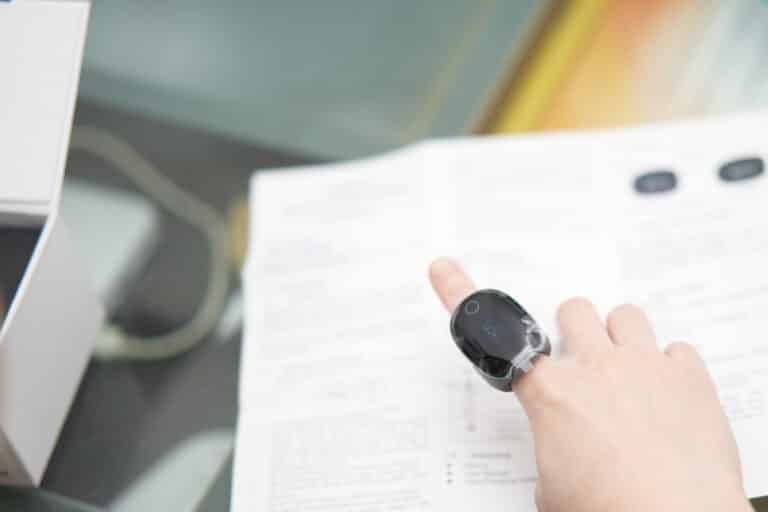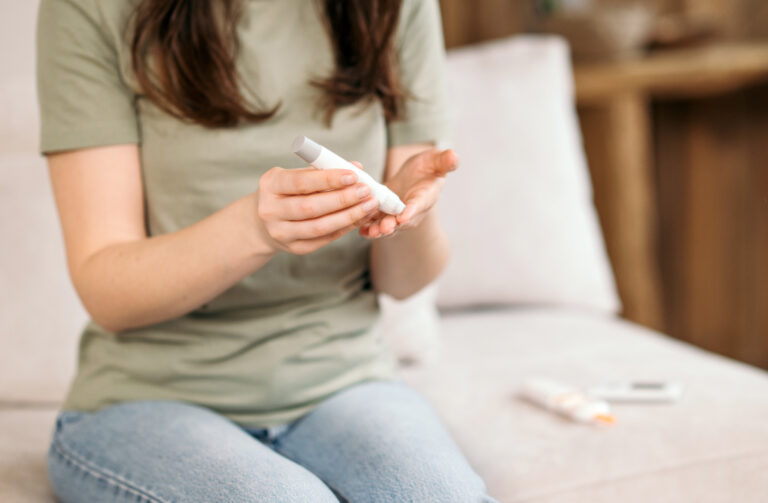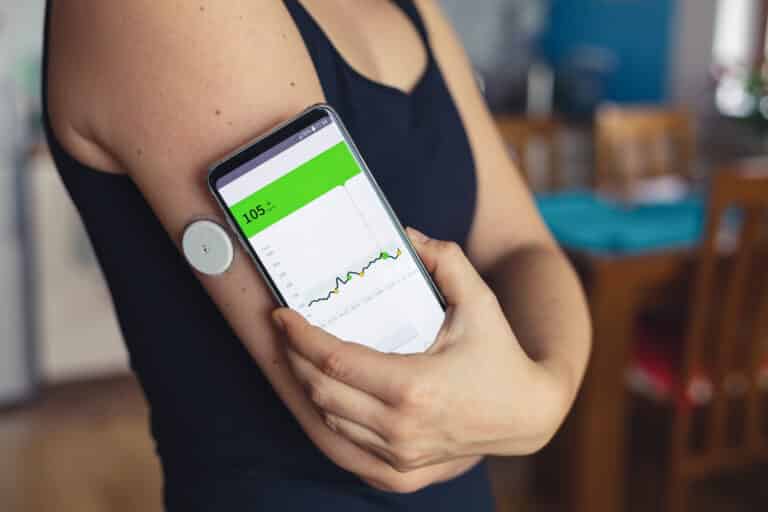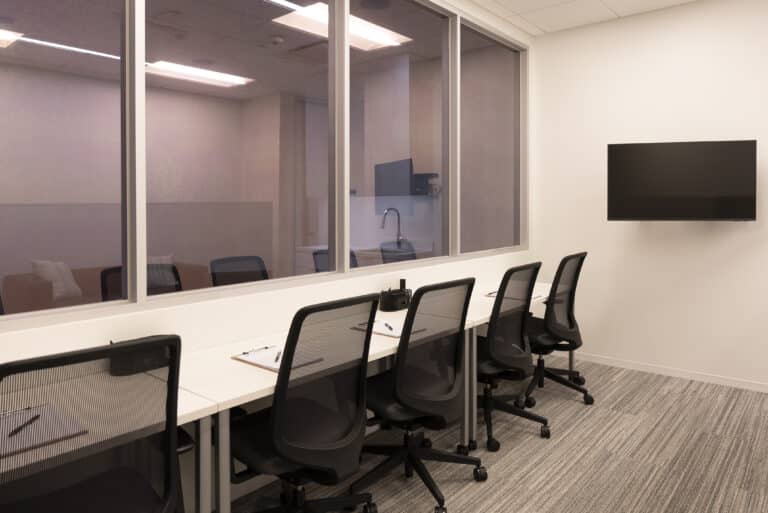Medical Human Factors and
Usability Engineering Consulting
In 2022, the Core Human Factors firm joined the Rimkus family of brands, resulting in a strategic partnership that significantly expanded Rimkus Life Sciences’ healthcare human factors consulting services on a global scale. In 2025, the addition of the team at Human Factors Consulting Services, Inc. (HFCSI) further strengthened the Medical Human Factors practice, adding deep expertise in human factors research and product development consulting. The mission of the Medical Human Factors practice is to infuse a human touch into every aspect of user research. We put this mission at the forefront while serving our clients, connecting with study participants, collaborating with co-workers, or enhancing the safety and usability of medical devices and combination products.
The Rimkus Life Sciences team has the expertise to support clients in their tailoring of medical devices and combination products precisely to the physical, cognitive, and perceptual characteristics of users. Our approach emphasizes a delicate balance of usability, usefulness, and desirability, and our methodologies address this equilibrium uniquely. We recognize that applying human factors and usability engineering to medical devices and combination products involves rigorous risk management for regulatory compliance and liability control. Our accomplished medical human factors experts excel in successfully navigating these challenges for our clients.
Our team can support U.S. Food and Drug Administration (FDA) human factors activities and documentation for:
- 510(k), De Novo, and Pre-Market Approval (PMA) submissions for medical devices
- New Drug Applications (NDAs), Abbreviated New Drug Applications (ANDAs), and Biologics License Applications (BLAs) for combination products
- Notified Body (NB) reviews, European Medicines Agency (EMA) submissions, and other regulatory bodies around the world
As a trusted business partner, the Core Medical Human Factors team can offer an unparalleled breadth of experience and industry knowledge. Each human factors consultant on our team collaborates closely with clients to accomplish the goal of completing the project in a timely and budget-conscious manner. Our commitment to service excellence, innovative ideas, and clear communication is notably appreciated by the clients we serve.
Our Services
The most effective way to improve the usability of medical devices is through empirical testing early in the development cycle. Continuous proactive improvement depends on iterative formative usability testing, where small numbers of intended users interact with available product features and interface elements. Implementing iterative medical device usability testing helps identify and resolve usability challenges before they escalate into costly problems. Initiating this process early in development is crucial, as discovering major issues late in development or after a product has launched can result in expensive redesign costs or recalls.
Engaging users with early-stage prototypes allows for timely, informed adjustments based on actual usage behaviors. There is no substitute for empirical evidence in design; real users interacting with the product can uncover unexpected insights that other testing methods cannot. Even simple sketches on paper can serve as the foundation for a formative usability study, making it easy to quickly begin gathering insights. Our team offers tailored support in planning and executing these studies, focusing on aligning clients’ goals to the project. We can also provide expert guidance on translating study findings into actionable design improvements.

Human factors validation testing, also known as summative testing, represents more than just confirming user needs. This testing represents the final, critical assessment of a medical device or combination product’s safety and usability. Our experts conduct human factors validation testing to meet FDA expectations, demonstrating that the device can be used safely and effectively by its intended users, for its intended purposes, and in the expected use conditions. This process typically involves representative users completing key tasks with either a production-ready model or a high-fidelity equivalent, providing evidence to support market readiness.
Summative medical device testing serves as the final checkpoint in the design process to confirm that all elements function as intended and align with design controls. Ideally, this stage also confirms that all major usability risks have already been addressed. A well-executed human factors validation study can provide assurance that the product is not only functional, but also safe, with risk mitigations effectively in place.
To prepare for this critical phase, we recommend starting with formative usability testing. Our human factors experts can help clients design and execute a summative study tailored to the product’s needs and provide guidance in applying the results to support regulatory submissions and successful product launches.

Making sure that a product’s instructions for use (IFU) are easily understood by end users is essential for safe and effective use. Providing clarity in instructional materials requires more effort than using simple vocabulary and short sentences. Our human factors team is equipped to design and execute labeling comprehension studies with representative users for regulatory compliance needs or to support clients’ proactive assessment goals.
These studies evaluate how well users interpret and understand each critical step outlined in the IFU, allowing for real-world insights to be gained. By observing actual user interactions, we can identify areas of confusion and recommend improvements that enhance clarity and reduce the risk of misuse.

Our Medical Human Factors team can assist clients in evaluating combination products through comparative analyses. We can help determine whether the outcomes of a human factors validation study should be submitted to the FDA as part of the marketing application, or if the outcomes should be simply documented within the usability engineering file as part of design controls.
We can also provide regulatory support for companies developing generic abbreviated new drug applications (ANDAs) with the goal of demonstrating that they are comparable to Reference Listed Drugs (RLDs) that are already available. In some cases, human factors studies may not be required for the ANDA device, as existing human factors research can be used to support device comparability. To establish this, the FDA typically requests a side-by-side analysis comparing the RLD and the proposed ANDA.
At the initial stages of product development, our human factors consulting team can conduct a risk-based evaluation of the drug-device interfaces for both the ANDA and the RLD. This evaluation can help shape the design of the generic product’s user interface to closely mirror that of the reference device, supporting the generic product’s substitutability. Alternatively, we can perform this comparative analysis once the device design is finalized and prepare the necessary documentation for FDA review.
FDA GUIDANCE DOCUMENT – Comparative Analyses and Related Comparative Use Human Factors Studies for a Drug-Device Combination Product Submitted in an ANDA: Draft Guidance for Industry – JANUARY 2017

Clear, user-friendly instructions for use (IFUs) are essential for creating a safe and effective product interaction. Our medical human factors consultancy prioritizes clarity and accessibility in every IFU we help develop. We go beyond simplifying language—our goal is to create instructions that truly resonate with users.
To help achieve this goal, we have an in-house graphic design team that works closely with instructional design experts and clients. Our graphic designers can produce materials that cater to a client’s brand identity as well as a wide range of representative users. Every design decision is informed by human factors analysis, including optimal font sizing, layout strategies, and print formatting best practices.
We embed usability and safety considerations into the design process from the beginning. However, if IFUs are created later in the development cycle, lacking user focus or contributing to regulatory delays, our team can provide targeted, task-based IFU development and testing. Our approach ensures that instructions support a smooth path to approval and market success.

Our team of human factors consultants brings broad expertise across a wide range of products and systems, from wearable technologies to printed instructions for use (IFUs) to software as a medical device (SaMD). While no one can claim to have seen every possible user interaction with medical devices and combination products, our extensive experience in the medical human factors industry equips us with meaningful insights to offer. Through our expert review process, we draw on lessons learned from past successes and challenges to help shape future product development. Whether a client is designing a medical device, a combination product, or another user-facing solution, we’re committed to helping create safe, user-friendly designs that meet both regulatory requirements and usability standards.
A successful human factors and usability engineering strategy hinges on understanding the expectations of Authorities Having Jurisdiction, also known as regulatory agencies. Designing a human factors validation study that aligns with these expectations is key. Adhering to the FDA human factors guidance and international usability standards such as IEC 62366-1 and AAMI HE75 is not just about compliance; it’s about building a pathway to market success. Our medical human factors consulting team has supported companies of all sizes in navigating the regulatory landscape for medical devices and combination products in both the U.S. and European markets. With experience spanning hundreds of products, we offer strategic insights grounded in current global standards for medical devices (including apps), pharmaceuticals, and combination products.
While standards provide a framework, our strength lies in staying ahead of the evolving regulatory and industry trends. As thought leaders, authors, and contributors to key standards in the field, our experts can help clients interpret the nuances behind the guidelines and implement effective, forward-looking strategies.

When clients seek to understand how their product compares to others in the market, our human factors consulting team can help provide an objective competitive evaluation by analyzing usability and desirability across competing systems. These direct comparisons offer actionable insights, helping teams identify which features may be unnecessary and which areas could benefit from improvement. Armed with this knowledge, clients can be more confident in developing and launching products that better resonate with users and stand out in the marketplace.

Gaining a clear understanding of how users interact with a product during their first experience is essential. Can they complete tasks as intended? Are there potential points of confusion? One effective way to explore these questions is through a cognitive walkthrough—a reliable method in medical device usability that evaluates how users might think and act when engaging with a product. This method details the step-by-step actions users are expected to take, identifies possible challenges they may face based on their knowledge and experience, and highlights the feedback mechanisms built into the system. Conducting a cognitive walkthrough using prototypes or mock-ups early in the design phase can provide valuable insights before significant resources are committed to development. Throughout the product life cycle, cognitive walkthroughs can be revisited to check for continued alignment with user needs and usability goals.

The field of healthcare human factors has tailored a set of usability heuristics that serve as guiding principles toward the design of user-friendly medical devices and combination products. We specialize in employing our expert heuristic analysis to each unique product, enabling us to assess and enhance design quality. This approach offers a rapid, cost-effective method for uncovering major usability concerns before investing in more extensive testing. By combining established methodologies with proprietary techniques, we deliver a focused evaluation that highlights potential issues likely to lead to critical use errors or significant usability challenges.

Contextual inquiry is a valuable research method used to better understand how individuals engage with devices in their daily routines at home, on the job, or in public settings. This approach involves observing users in their actual-use environments as they interact with a product or system, while simultaneously gathering their feedback and perspectives in real time. As a result of a contextual inquiry, we gain valuable insights into how a product functions in its intended environment and how users engage with it. Our extensive experience in medical human factors consulting has allowed us to work with a wide variety of user groups and use environments, enabling us to better anticipate potential challenges for clients.

Locating representative users to participate in usability studies can often be challenging, and coordinating their availability adds another layer of complexity. Our dedicated service group, Core Participant Network, has an ever-expanding participant recruitment database, the majority of which include healthcare professionals, patients, and caregivers. Our team takes pride in managing the participant recruitment process by identifying and scheduling participants who closely match clients’ target user profiles. For more details on how we support participant recruitment for research, please visit our affiliated site: https://www.corepn.com/.

Core Human Factors, Inc. operates an Institutional Review Board (IRB) that is officially registered with the U.S. Department of Health and Human Services. This board is dedicated to reviewing research protocols to ensure ethical treatment of subjects. Our team’s specialized focus on behavioral (non-drug) studies, combined with a strong commitment to ethical research practices, enables us to offer efficient, non-bureaucratic IRB review services in a cost-effective manner.

Our medical human factors team operates dedicated research facilities across several U.S. locations. In Bala Cynwyd, Pennsylvania (near Philadelphia), we maintain three fully equipped usability testing labs. Our office in Houston, Texas, hosts two suites, and we have one additional suite in Chatsworth, California, near Los Angeles. Each suite includes a participant testing room, an observation area with one-way mirror viewing, a kitchenette, and a private office space for clients.
When clients visit our facilities, we prioritize comfort and convenience. A dedicated client services manager is available to assist throughout the visit. Amenities include complimentary high-speed Wi-Fi, beverages, snacks, and optional catering from top-rated local restaurants. All suites are equipped with multi-camera, high-definition video recording capabilities, and we offer secure live streaming for remote observers. After the sessions, clients can access recordings through a secure platform for review and analysis.
Whether the study is conducted at one of our usability labs in the U.S., or another domestic or international lab, we can manage all logistical aspects to ensure a smooth research experience.

Our Leadership Team



